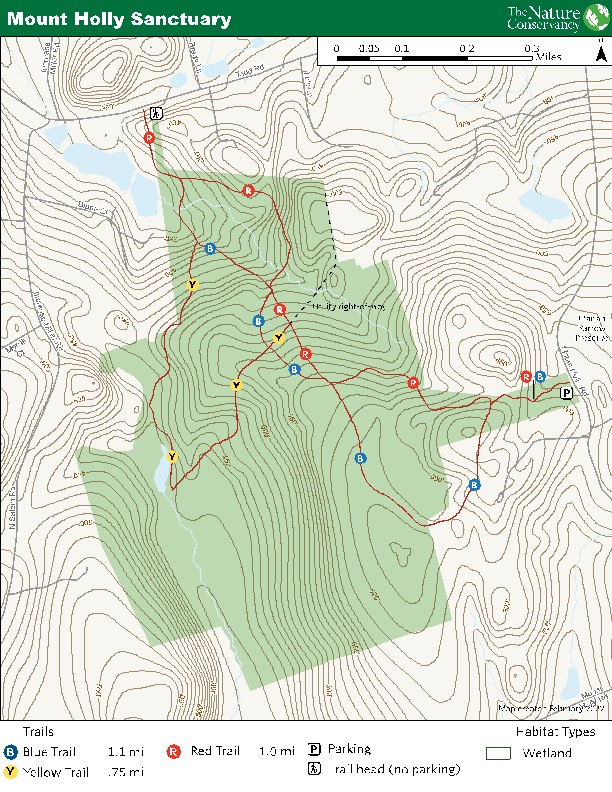Three color-coded trails provide access to nearly the entire preserve. The red and blue trails criss-cross each other several times and take hikers on a meandering walk through mixed deciduous forest and stone outcroppings. The yellow trail brings visitors into an outer loop through wetlands and thickets. Horses are permitted along designated trail sections throughout the preserve.
The Red and Blue trails start at the main trailhead on Mount Holly Road and can be combined to make a 2.1-mile loop trail that travels down and back up a forested hillside. Both trails connect with the Yellow Trail near the center of the preserve, which passes through a beautiful wetland area. Please note that all mileages listed are one-way distances. Here’s what to expect when you hit the trails.
Red Trail
The Red Trail is an easy-to-moderate hike and is marked with red paint blazes. The trail is 1 mile long and can be accessed via the main trailhead on Mount Holly Road. It is a natural soil surface trail that starts at the top of a fully forested hill. The trail is fully forested. Expect 200 feet of elevation change and a typical trail width of 60 inches. Expect small natural stream crossings and some obstructions, such as rocks, roots and fallen trees.
Blue Trail
The Blue Trail is an easy-to-moderate hike and is marked with blue paint blazes. The trail is 1.1 miles long and can be accessed via the main trailhead on Mount Holly Road. It is a natural soil surface trail that starts at the top of a hill. The trail is fully forested. Expect 200 feet of elevation change and a typical trail width of 60 inches. Expect small natural stream crossings and some obstructions, such as rocks, roots and fallen trees.
Yellow Trail
The Yellow Trail is an easy-to-moderate hike and is marked with yellow paint blazes. The trail is 0.75 miles long and can be accessed via the Blue Trail or the Red Trail near the center of the preserve. The Yellow Trail is a natural soil surface trail that dips down into a beautiful wetland area. Expect 100 feet of elevation change and a typical trail width of 60 inches. There are small natural stream crossings and some obstructions, such as rocks, roots and fallen trees. Expect wet, muddy conditions through winter and spring and on rainy days.

